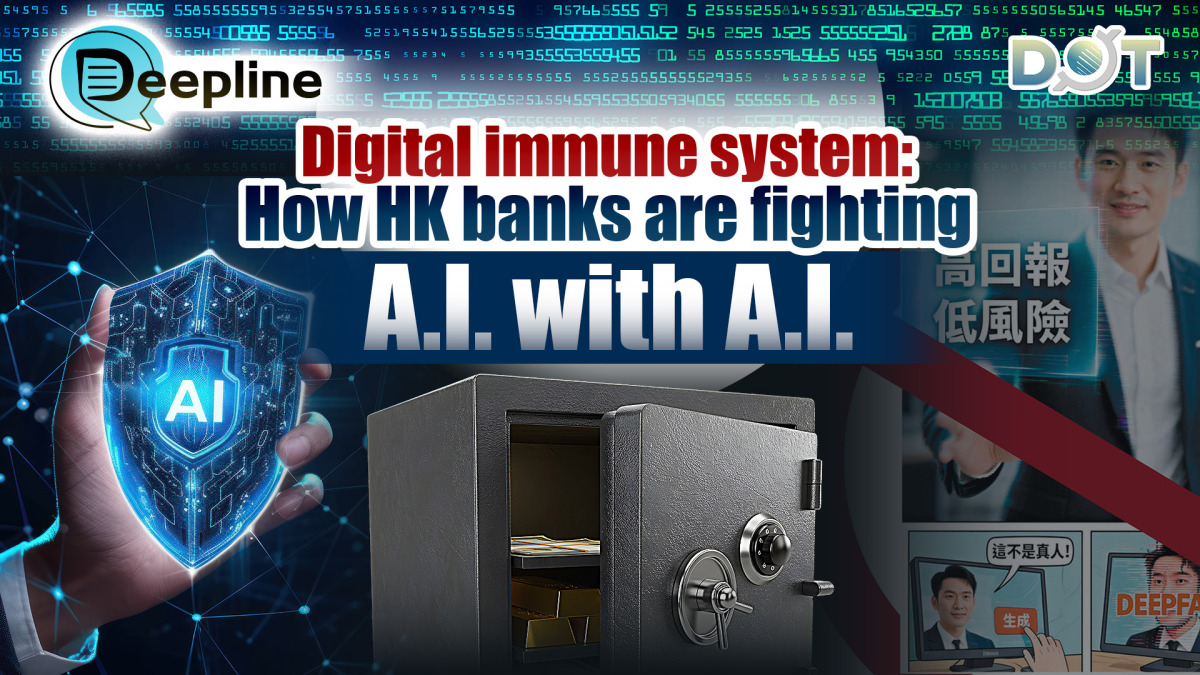
When you receive a video of Chief Executive John Lee promoting high-return investments, or hear Eddie Yue personally explaining investment opportunities, would you be tempted? In recent years, financial fraud methods have emerged one after another. Scammers using these highly realistic "Deepfake" technologies have once shocked the entire city by swindling huge sums of money, but crisis breeds opportunity.
The Hong Kong Monetary Authority (HKMA) and Cyberport yesterday (Oct. 15) announced the participant list for the second phase of the Gen A.I. Sandbox. This sandbox program also focuses on strengthening AI governance, signifying the launch of a technological offensive and defensive battle of "using AI against AI".
Building on the experience of the first phase, the new phase marks the industry's shift from exploring the possibilities of AI to promoting safe and reliable AI applications. Out of more than 60 proposed solutions, 27 use cases from 20 banks and 14 technology partners were invited to join the second phase of the Gen A.I. Sandbox. During the review process, all proposed solutions were ranked based on their level of innovation, technical complexity, and potential value to the industry.
Deputy Chief Executive of the HKMA, Arthur Yuen, stated that the second phase of the Gen A.I. Sandbox is an important step towards achieving safer and more robust AI applications. He also emphasized that the participation of various types of banks fully reflects that the transformative potential brought by AI has become an industry consensus.
Using AI for automated quality inspection
It is worth noting that under the second phase of the sandbox program, several use cases adopt the "using AI against AI" strategy. Specifically, this involves using AI to perform automated quality inspection of AI-generated content, thereby enhancing system accuracy and consistency in a more scalable manner. In the face of increasing risks from deepfake fraud, the sandbox also provides a testing ground for developing innovative defense mechanisms. Some participants will use A.I. to conduct simulated attack and defense tests, strengthening systems to resist more sophisticated digital fraud techniques.
Deepfake is a portmanteau of "deep learning" and "fake," referring to the use of deep learning for image synthesis to forge videos. It only requires a 5-second voice sample to simulate a human voice, and a smartphone can accomplish "grafting" or manipulation. Against this backdrop, various banks are actively building a "digital immune system." Among the 27 use cases shortlisted for the second phase of the sandbox, many focus on anti-fraud and risk management. These include HSBC's trial of a fraud detection system, Bank of China (Hong Kong)'s construction of a "facial recognition anti-deepfake" defense line, and several banks using AI for simulated attack and defense tests, forming a multi-layered protection network.
Three major banks enter sandbox again
The three major banks in Hong Kong have also been selected again for the second phase of the sandbox and will conduct practical tests on artificial intelligence applications in different areas. In the first phase of the sandbox, Bank of China (Hong Kong) already tested two main projects: a digital human assistant and an anti-fraud solution. In the second phase, the bank will further utilize Gen A.I. technology to drive the digital transformation of wealth management, ensure information accuracy through multi-party collaboration, and add security mechanisms to balance user experience with compliance requirements. In terms of anti-fraud, the bank will deepen its fraud detection technology, enabling Gen A.I. to continuously learn new deepfake techniques and build a more accurate and comprehensive risk prevention and control system.
Beyond defense, AI is also driving service innovation. HSBC will also participate in the second phase of the Gen A.I. Sandbox, trialing use cases for converting text to sign language and detecting fraud. Bojan Obradović, Group Head of Innovation and Digital Partnerships at HSBC, stated that in the first phase, the bank completed a series of internal tests, including simulating real-time interactions with customers. Other trial use cases included providing financial market insights, enhancing fraud investigation processes, and strengthening transaction tracking.
As for Standard Chartered Hong Kong, it is focusing on risk management, anti-fraud measures, and customer experience. Mary Huen, CEO of Hong Kong and Greater China & North Asia at Standard Chartered, revealed that the bank will test two major areas—financial transaction monitoring and customer financial analysis—within a risk-controlled framework. It will explore using large language models to enhance the efficiency of the bank's investigation work and assist relationship managers in providing more comprehensive, data-driven analysis to predict customers' financial needs, thereby offering more personalized financial solutions.
What is the role of the Gen A.I. Sandbox?
The HKMA, in collaboration with Cyberport, launched the Gen A.I. Sandbox in August last year, aiming to provide banks with a risk-controlled "testing ground" for fintech. This innovative platform allows banks to practically test various AI technology application methods in a safe environment. Targeting the unique needs of Hong Kong's banking industry, it helps develop practical AI solutions, injecting new momentum into industry innovation.
This sandbox acts like a "hands-on AI training base" for banks, enabling institutions to deeply explore various application possibilities of AI, including core functions such as retrieval-augmented generation, model adaptation, model training, and fine-tuning. Banks can test AI models on this platform that possess capabilities for real-time interaction, specific domain assessment, decision support, and predictive analysis, with a particular focus on the three key areas of risk management, anti-fraud, and customer experience.
Through this sandbox program, banks can more comprehensively assess the feasibility of different application scenarios and make necessary adjustments and optimizations before large-scale investment. As the regulatory authority, the HKMA can also, through this interactive and continuously evolving approach, promptly grasp the potential risks of generative AI that may affect financial stability. Simultaneously, by leveraging the practical experience accumulated by banks in the sandbox, it can share best practice solutions within the industry and consider whether corresponding guidance and regulations are needed.
(Source: Wen Wei Po; Journalist: Ma Chui-mei; English Editor: Darius)
Related News:
HK to launch AI teaching blueprint, strengthen science education to foster tech talent: John Lee




















Comment